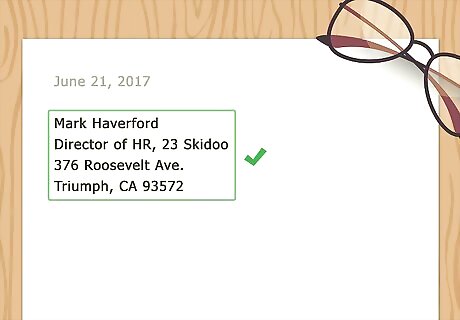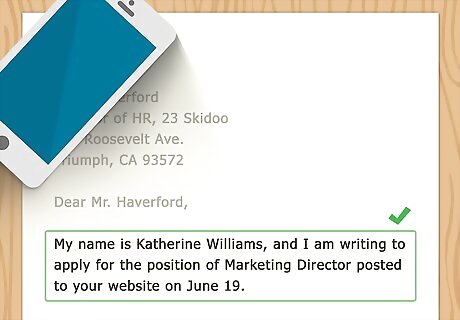
views
Before You Write

Read the instructions. All applications, proposals or other procedures requiring a letter of intent will have specific instructions regarding what information will be required in said letter. Review these directions before beginning to write a letter of intent. Visit the business' or school's website. All necessities should be outlined accordingly. If you cannot find what you're looking for, make a phone call.

Determine the name and address of the person to receive the letter. A quick phone call to the institution or place of business can usually get you the information you need if you cannot find the info online. If your letter is going to a whole team, be as specific as possible. If you know all their names, great! Include them. Your research will be impressive.

Make notes. Write down what you will want to include in the letter of intent, such as your personal information, past accomplishments and achievements, awards that have been won, particular challenges that have been overcome, and successes you are most proud of. Write down what you plan to do, at school or in business or with whatever you will achieve in the program you're applying to. A letter of intent is generally more comprehensive than a cover letter, though they are similar. It not only addresses the objectives outlined for a cover letter, but also defines your career objectives and goals, professional experience, leadership skills, and unique attributes to set you apart from the rest.
Your Letter of Intent

Introduce yourself at the beginning. They don't call it an "introduction" for nothing. If you are writing to a college, include what school you attend and what year you are. Give a few details that really give the reader a glimpse into who you are. If you're applying to a business, name the career field or organization/employer with whom you are interested in applying to and for which quarter. Personalize the letter. Make sure the letter of intent addresses the specific institution or organization to which it is being submitted. If it is a letter for graduate school, note why that school is the right choice for you. If it is a business proposal, highlight something that you have done which demonstrates a specific skill set that will apply to that company or organization.

Start getting into specifics. Here's where your letter starts getting good. You need to sell yourself and show adequate knowledge of the program. The next few paragraphs should be dedicated to this. Describe why you are writing the letter. Describe how you first learned about the internship or job position and why you are excited about it. Why are you interested in it and not their competitors? State your credentials. Don't be shy! Explain why you're the perfect candidate for the school or program you're applying for. Use specific examples of technical or general skills, knowledge, experience (paid or unpaid), languages, and computer software that are relevant to the field. This can be in paragraph form or a bulleted list of your accomplishments. Be specific and be honest. Say some good things about the school/program. Flatter the reader, but do not overdo it. Describe why you find the position appealing, and how your strengths and interests would be a good fit for the position.

In the conclusion, request a response. Express your desire for an interview. Make sure that you include all of your contact information in the letter so you can be contacted for the interview. You may have to follow up as well, depending on the policy of the organization. It's best to cover all your bases.
Once It's Created

Write a final draft. If your first draft was a bit haphazard, grab your notes and the instructions and write a second, final draft. Use proper grammar and spelling, and include all the information that is required. Make sure to look at your work on a micro and macro level. Not only should the words be accurate, concise, and fit together, but the paper needs to fit together as a whole. Does it seem to gel? Would any reordering make it better?

Proofread and edit your work. Take a break before you start editing -- your mind needs different stimuli to process to break up the monotony and find the smaller errors. Once you're ready to go back, read the letter of intent and make necessary changes to ensure it reads clearly and everything makes sense. Edit ruthlessly to avoid repetition and make the writing flow smoothly from one paragraph to the next. Have a fellow student or co-worker, or a family member or friend read it for you. A new set of eyes will see a new set of things.

Submit the letter of intent. Include the letter of intent with any other application materials, and submit the entire package to the institution according to the directions. If you have more than one page, you may want your name on each one (small and in the corner) in case the pages get separated.


















Comments
0 comment